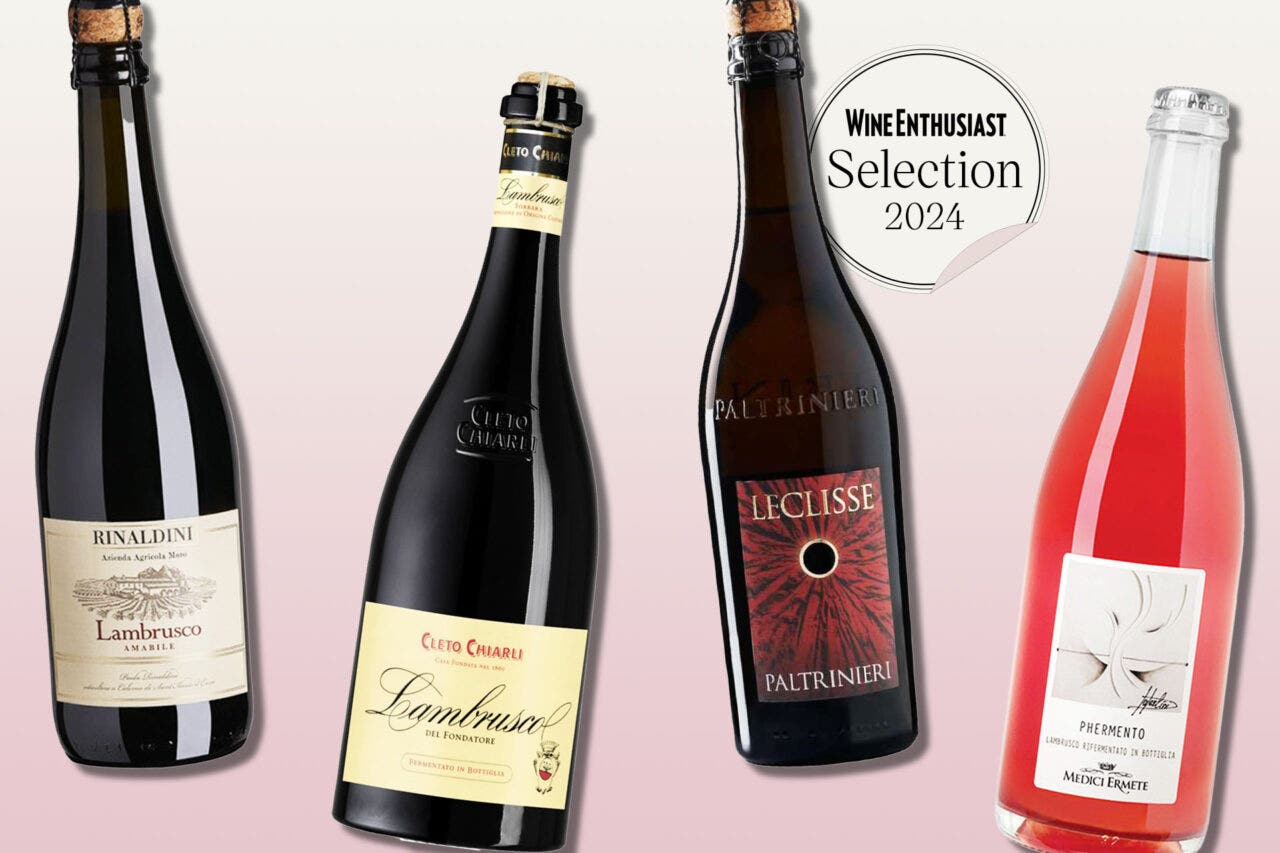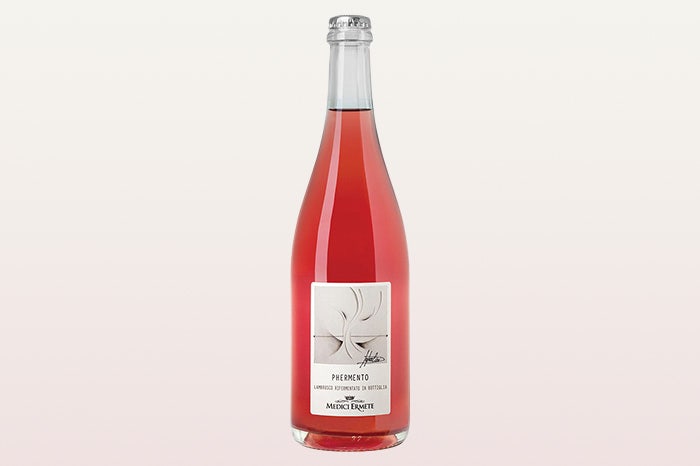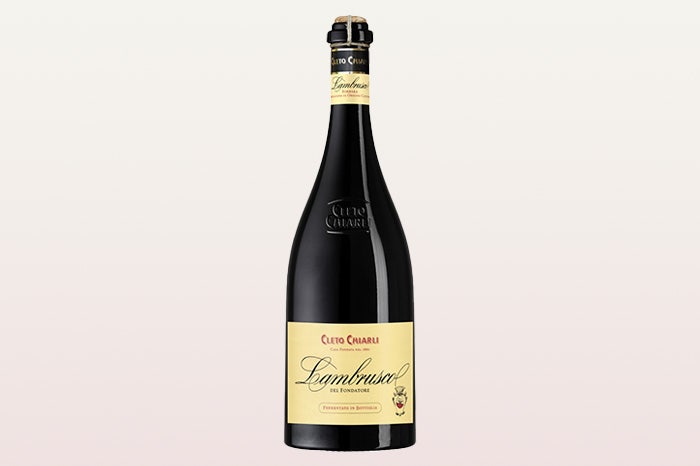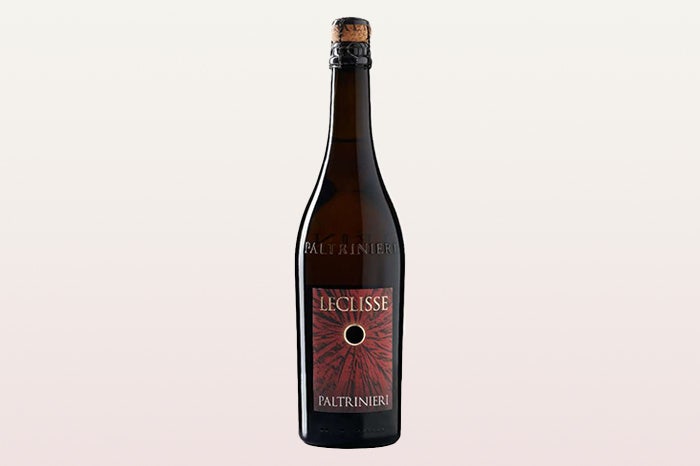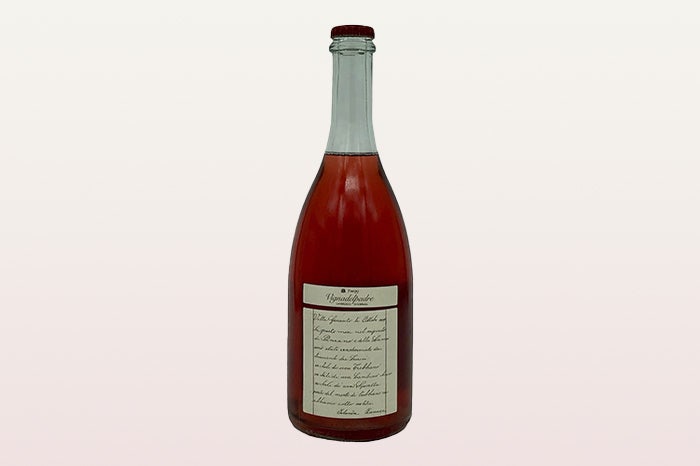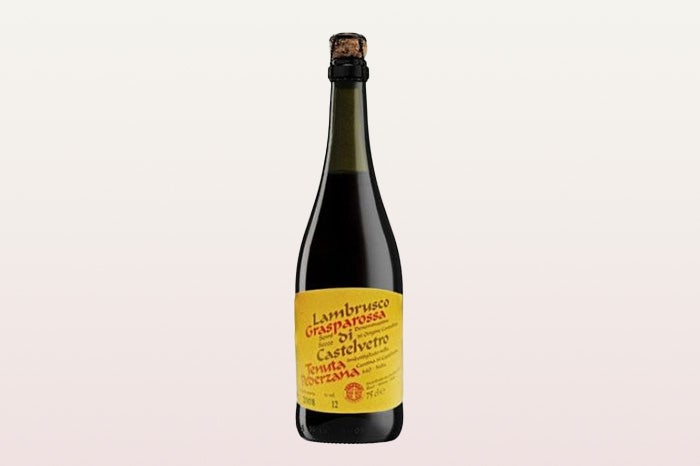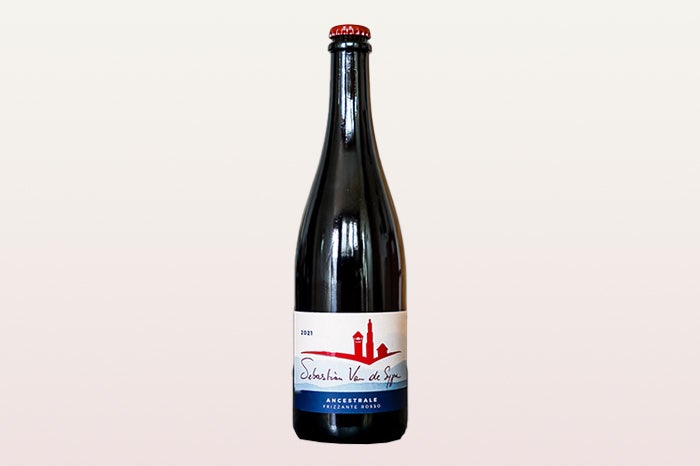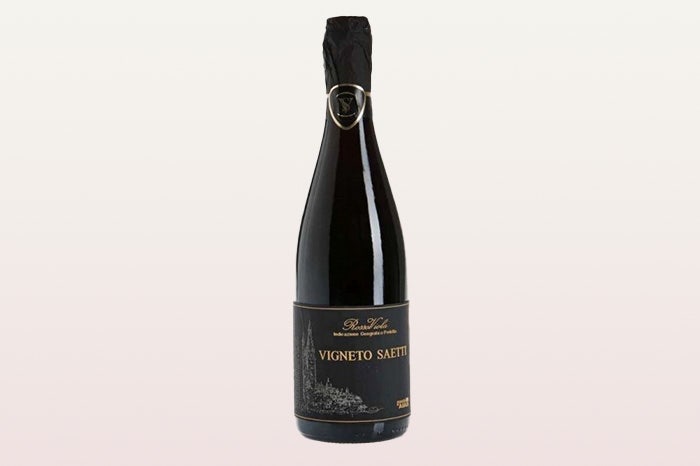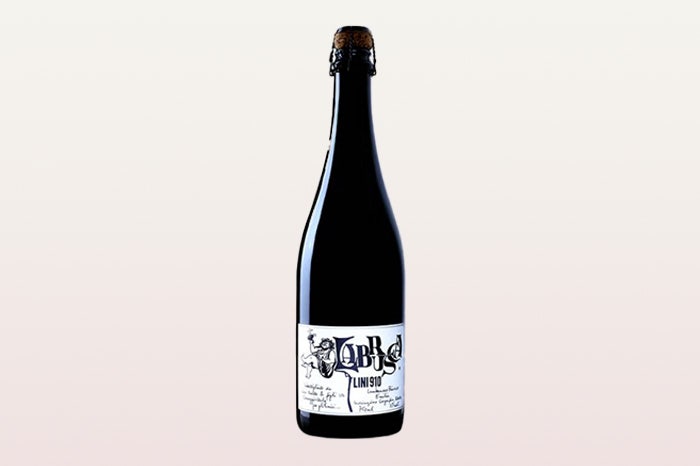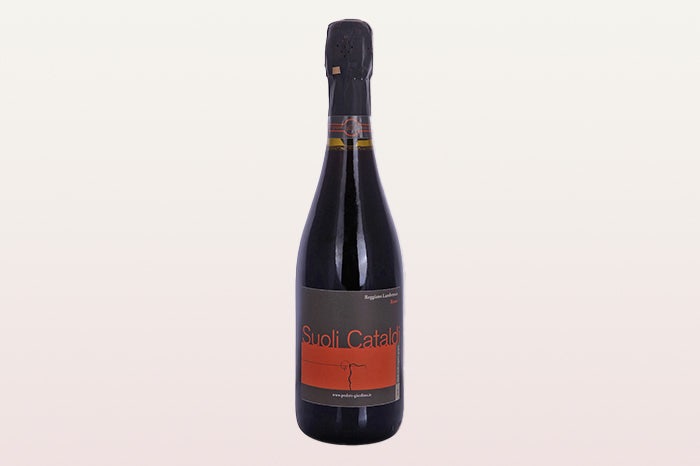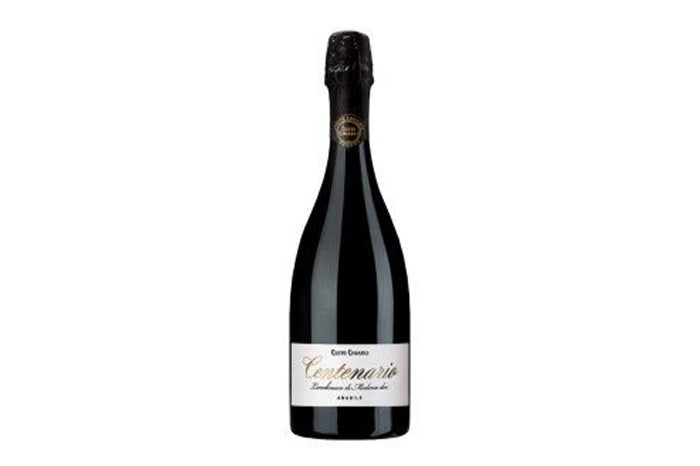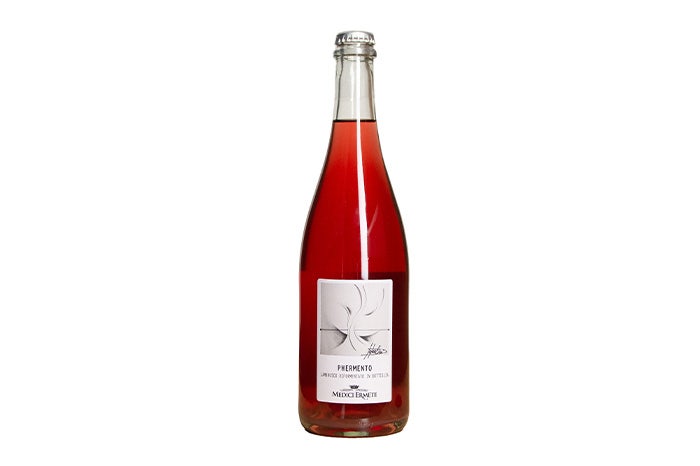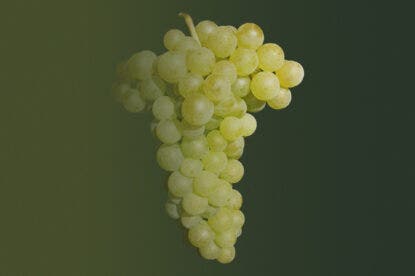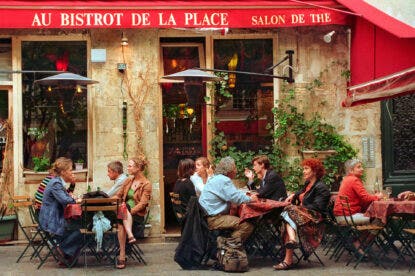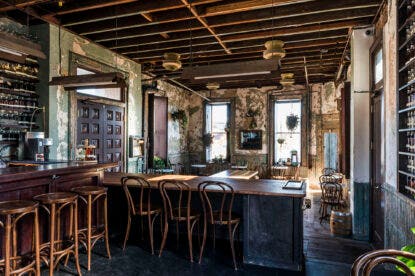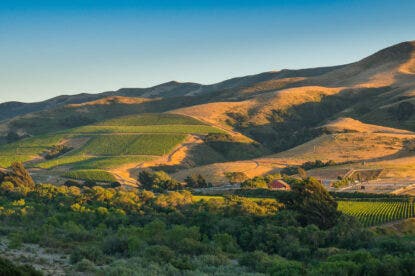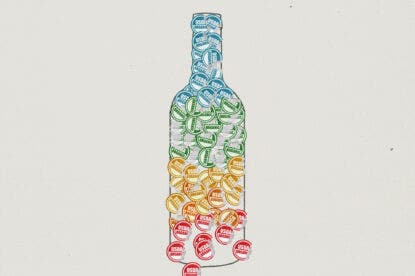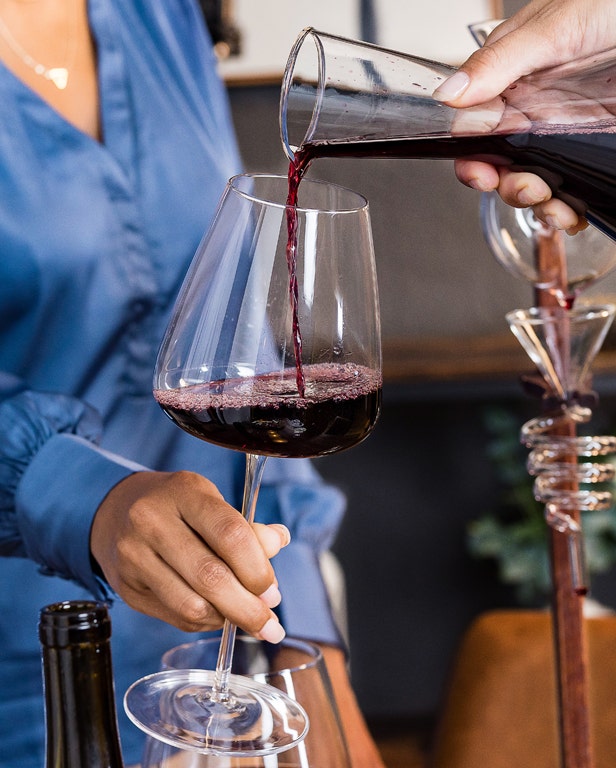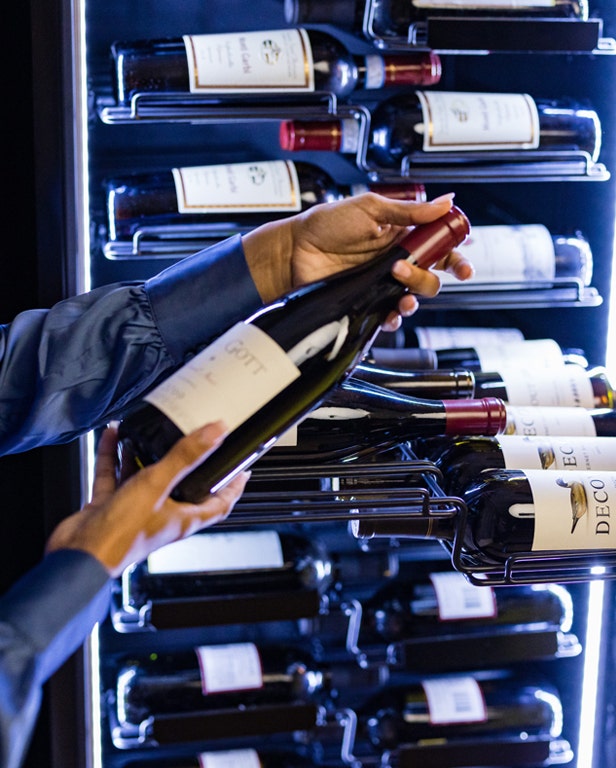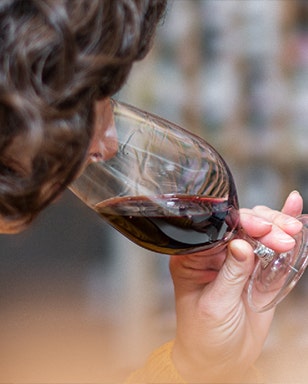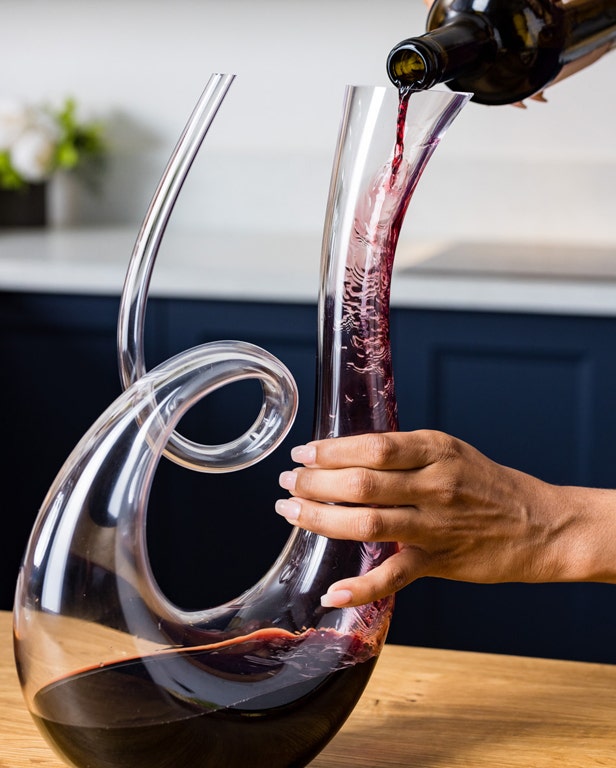Seeking a dry, crisp and savory wine that pairs with just about any dish on the planet and makes an excellent apéritif? Look for Lambrusco. Yes, Lambrusco.
Once known as the cheap, cheerful and fizzy plonk served with ice cubes, today’s top Lambruscos are a far cry from the industrially made, cloyingly sweet versions that flooded American shelves in the 1970s and ’80s.
The top wines of Lambrusco have such a verve, energy and happiness that you feel better after a few sips,” said Writer-at-Large Jeff Porter, Wine Enthusiast’s resident Italian wine reviewer, back in January. “The continued push towards better farming, drier wines and a revitalization of old-school winemaking techniques are creating wines that show complexity and drinkability in equal proportions.”
You May Also Like: The Best Lambrusco to Drink Right Now
Hailing from the Emilia-Romagna region, Lambrusco is made from its namesake red grape. Or, to be exact, the extended family of varieties grouped under the Lambrusco category.
Once loved and then scorned for its candied sweetness, a number of producers now make distinct, slightly sparkling Lambruscos that belong on every wine lover’s radar. However, buyers beware—the styles vary tremendously and include lightweight, sweet and semi-sweet wines. The best Lambruscos are dry, crisp and delicious. Most are also extremely well-priced. To help you navigate through the ever-evolving category, we’ve put together a guide to the top styles and bottles worth seeking out.
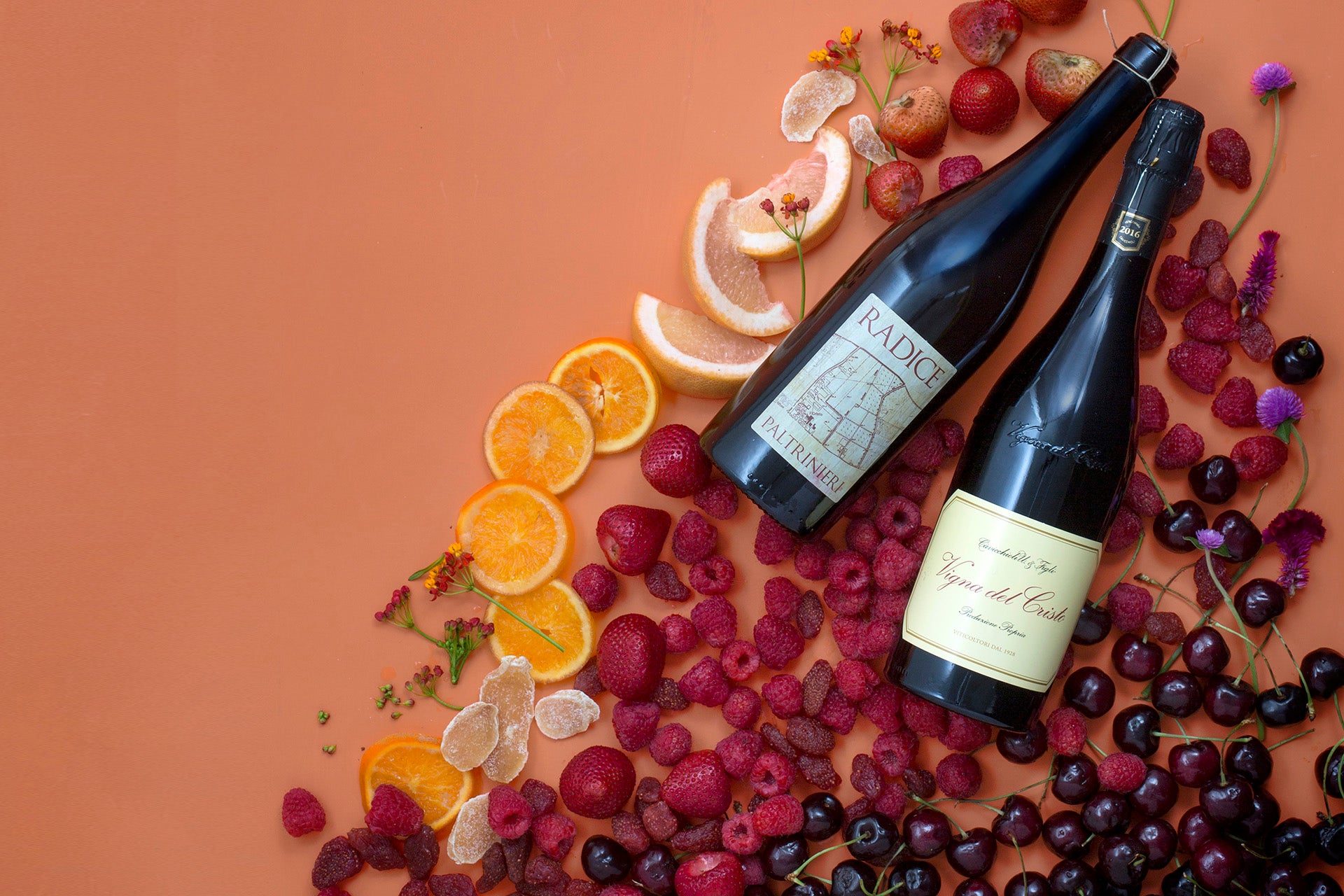
Lambrusco di Sorbara
Lightly colored, fragrant and boasting vibrant acidity, Lambrusco di Sorbara, made from the grape of the same name, is the most refined wine of the Lambrusco category. Made around the village of Sorbara north of Modena, the variety excels in the sandy, fertile plains between the Secchia and Panaro rivers.
Historically, Lambrusco di Sorbara was a dry, crisp wine that finished its fermentation in the bottle to produce a light effervescence. But large cellars then discovered the Charmat method, which is a much quicker and less labor-intensive process where the second fermentation occurs in steel tanks. It also allowed the flexibility to produce sweet wines.
“The Charmat method generated a huge increase in production, but it also ended up destroying Lambrusco’s reputation,” says Alberto Paltrinieri, who runs his family’s winery, Cantina Paltrinieri. Founded in 1926 in the heart of Sorbara, the firm makes wines exclusively with estate grapes.
“Charmat can give excellent results and control quality, or it can be used to make industrial beverages to suit market trends,” says Paltrinieri. “However, longer fermentation times in the tank that last for three months, as opposed to three days, can yield more complex, aromatic wines.”
You May Also Like: How Sparkling Wine is Made
Paltrinieri notes a number of producers have gone back to the traditional practice of carrying out the second fermentation in the bottle with no degorging, leaving a fine sediment at the bottom. This method produces dry, terroir-driven wines with personality.
These evolved methods have led to a renaissance for Lambrusco di Sorbara. However, the wine’s rebirth really began in the vineyard, says Paltrinieri, where “greatly decreasing yields has been fundamental.”
Anselmo Chiarli agrees. He’s the managing director of Chiarli 1860, the oldest winery in the region, and Cleto Chiarli, the family’s winery dedicated solely to Lambrusco made with estate grapes. While lowered yields and optimal vineyard sites have aided the resurgence, Chiarli says that identification of the best clones has further enhanced quality.
“In the 1980s, we began recovering the old clones in our vineyards,” he says. “After massal selection [where grafts are taken from existing old vines to propagate plantings, as opposed to planting new nursery vines], we planted the offspring of the best-performing vines.” These old clones give the wines more depth of flavor, which results in greater authenticity.
The best Lambrusco di Sorbara examples are dry, with enticing scents of violet and crisp red-berry flavors. They’re silky, lightly sparkling and offer racy acidity. These are the most food-friendly Lambruscos, pairing beautifully with the region’s hearty cuisine, like cured meat or tortellini in brodo.
Wine Enthusiast recommends:
Medici Ermete 2022 Phermento Lambrusco Rifermentato in Bottiglia Lambrusco di Sorbara (Lambrusco di Sorbara)
A wine of history and pure joy, this watermelon Jolly Rancher-colored sparkling wine bursts out of the glass with aromas of wild strawberry, green herbs and candied rose petals. The bracing palate pops with electric acidity, tart lime, watermelon and saline. A bottle for all occasions. Editor’s Choice. 94 Points — Jeff Porter
$29 Wine 365Cleto Chiarli 2022 Lambrusco Del Fondatore Lambrusco di Sorbara (Lambrusco di Sorbara)
Paltrinieri 2022 Leclisse Lambrusco (Lambrusco di Sorbara)
Delicate aromas of fresh flowers, cherries, McIntosh apple and green herbs open the nose of this elegant sparkling wine. Tart strawberries, cranberries and a hint of vanilla crème give shape to the palate as the gentle perlage acts like silk on the palate. 93 Points— J.P.
$25 Wine.comFiorini 2021 Vignadelpadre a Giuseppe Lambrusco di Sorbara (Lambrusco di Sorbara)
This wine opens with aromas of cut strawberries macerated with mint in their own juice alongside wild rose and subtle yeastiness. Sour Bing cherries and fresh thyme lead the way on the palate of this complex and beautiful wine, finishing with zippy acidity and near-perfect bubbles. 94 Points — J.P.
$ Varies Blackwell’s Wine & Spirits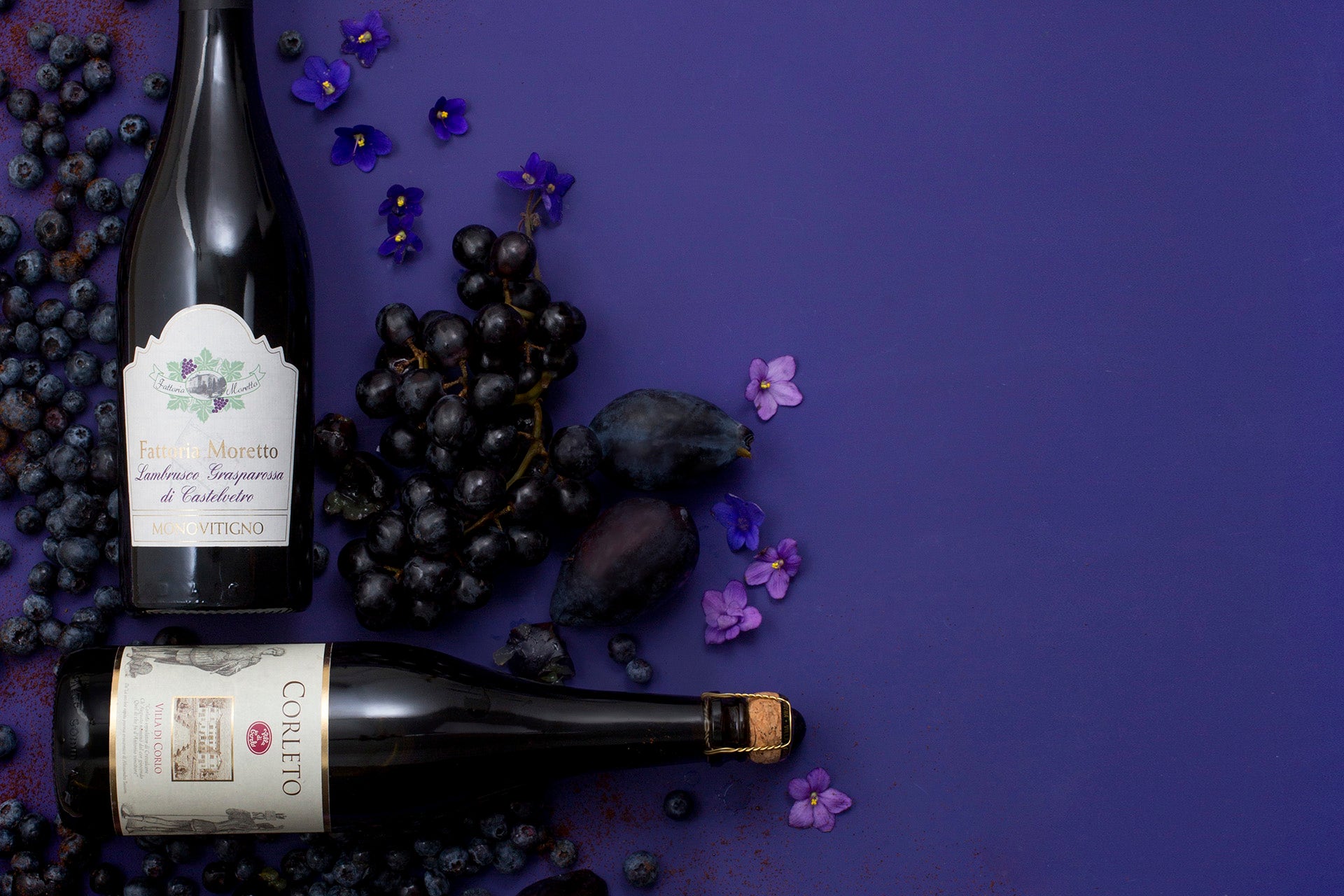
Lambrusco Grasparossa di Castelvetro
The polar opposite of Lambrusco di Sorbara, wines made with the thick-skinned, late-ripening Lambrusco Grasparossa grape are darkly hued and have more tannic structure than other Lambruscos. And while Lambrusco di Sorbara excels in sandy soils on the plains, Lambrusco Grasparossa needs clay and silt for optimum results.
Grasparossa’s spiritual home is south of Modena, around the town of Castelvetro. Among the earthiest and fullest-bodied of all Lambruscos, Grasparossa di Castelvetro is the flagship wine for this variety.
“Lambrusco Grasparossa di Castelvetro is actually more like a red wine, thanks to its body, tannins and structure,” says Fabio Altariva, who runs his family’s Fattoria Moretto winery, in the heart of the Castelvetro hills, along with his brother, Fausto.
You May Also Like: Which is the Best Glass for Sparkling Wine?
While other Lambrusco varieties grow in the plains, Lambrusco Grasparossa is the only one that does well on the hillsides, Altariva says, at around 650 feet above sea level, where it’s always breezy. Top producers keep yields far below the maximum allowed, and many of these leaders focus on specific vineyard sites for best results.
In the past, Grasparossa bottlings tended to be more rustic, but most producers now seek to make increasingly elegant wines. In part, this is done by careful management of skin maceration to ensure they only extract the right amount of tannins. The best Lambrusco di Grasparossa Castelvetro bottlings are dry, dark and frothy. They offer dark berry and black-skinned fruit flavors, as well as a pleasantly bitter finish.
Wine Enthusiast recommends:
Tenuta Pederzana 2021 Lambrusco (Lambrusco Grasparossa di Castelvetro)
This Lambrusco opens with aromas of spiced-plum compote, fresh black fig and pepper. The bold and dense palate is loaded with black-hued fruit flavors melding seamlessly with savory herbs, spices and earthy notes finishing with a round and soft perlage. 91 Points — J.P.
$20 Bottle ShopSebastian Van de Sype 2021 Ancestrale Grasparossa di Castelvetro (Lambrusco Grasparossa di Castelvetro)
Sebastian Van de Sype is a former aerospace engineer who worked on Formula 1 race cars, but now he is taking his genius to the fields to produce pure, earnest and truthful Lambrusco from 100% Grasparossa. Fresh aromas of plum, blackberry and cassis rise out of the glass with subtle hints of dried leaf and wildflowers in the background, which move to the front as the wine opens. It’s energetic on the palate with a spark of acidity that keeps the palate fresh. Fine bubbles tingle the palate, and the core of fruit continues to develop with each sip. This is an estate to follow. Editor’s Choice. 95 Points — J.P.
$34 Terroirizer
Lambrusco Salamino
The most planted of the Lambrusco varieties, Lambrusco Salamino is often blended with other grapes to add its generous color and marked acidity without imparting strong flavors. It’s also commonly used to make off-dry and sweet wines.
Lambrusco Salamino is planted extensively in the province of Modena, especially in the northern part of the province around the Santa Croce hamlet near Carpi, where it originated.
While there’s a denomination devoted to the variety, Lambrusco Salamino di Santa Croce, most producers in the Modena province blend the grape into other Lambrusco bottlings.
Lambrusco Salamino also plays an important role in Lambrusco di Sorbara production. The latter has a flowering anomaly that results in sterile pollen, so growers plant Salamino alongside to act as a pollinator. Up to 40% of Lambrusco Salamino can be used in Lambrusco di Sorbara wines. Lambrusco Salamino is widely cultivated in the Reggio Emilia province, where it’s enjoyed excellent results.
You May Also Like: A Guide to the King of Cheeses, Parmigiano-Reggiano
While the Santa Croce growing zone has fertile soils similar to those of Lambrusco di Sorbara, the plains near the foothills of Reggio Emilia contain more clay and rock.
“Thanks to the soils, Lambrusco Salamino in this area produces richer wines, with more structure and tannins when compared to other areas,” says Alberto Medici, co-owner and part of the fourth generation of his family’s Medici Ermete winery in Reggio Emilia.
Fragrant and fresh, dry wines made with Lambrusco Salamino boast intense red-berry sensations and are well-balanced. They’re somewhere between Lambrusco di Sorbara and Grasparossa bottlings.
“Lambrusco Salamino has vibrant acidity, but still lower acidity than Lambrusco di Sorbara,” says Medici. “And while they are well structured, Lambrusco Salamino wines aren’t as tannic as Grasparossa offerings.”
Wine Enthusiast recommends:
Vigneto Saetti 2021 Rosso Viola Lambrusco Salamino (Lambrusco dell’Emilia)
100% Salamino grown organically in the hills north of Modena this wine is the personification of the Saetti family’s dedication to their craft. Aromas of blackberries, mulberries and tamarind share the glass with violets, dried roses and wild herbs. The palate is lush and vibrant at the same time with rich ripe black-hued fruits balanced with crunchy acidity. The wine has a long and refined finish highlighted by the well-crafted perlage. 95 Points — J.P.
$ Varies The GrapevineLini 910 NV Labrusca Bianco Lambrusco Salamino (Lambrusco dell’Emilia)
Enticing aromas of Bosc pear, chamomile, singed orange rind and lemon oil waft from the glass. It’s vibrant and crisp on the palate with tart nectarine, pressed yellow flowers, gentian and bitter almond on the finish. Best Buy. 93 Points — J.P.
$18 Lincoln Fine Wines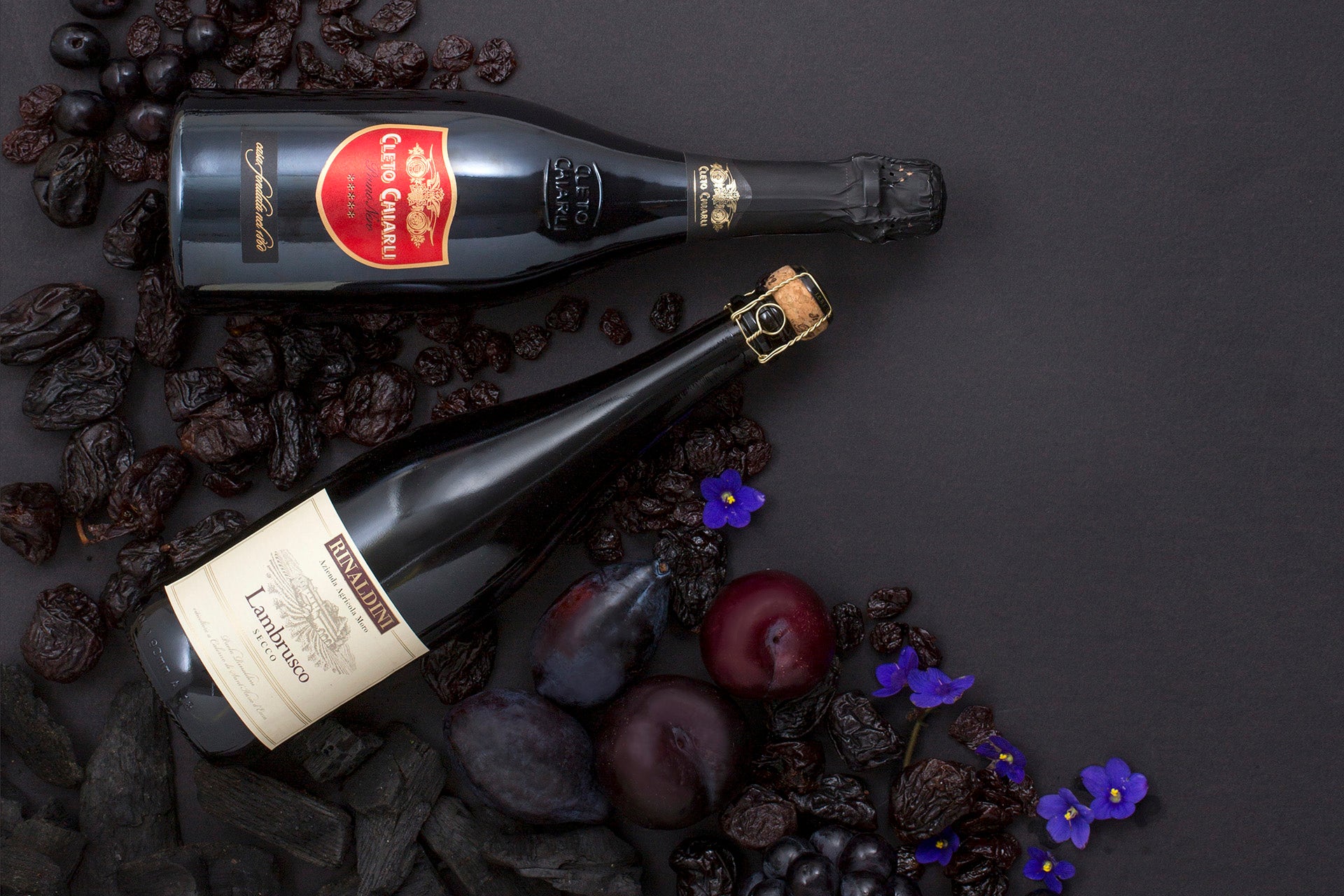
Lambrusco di Modena and Lambrusco Reggiano
Besides the three DOC/DOP (Denominazione di Origine Controllata/Protetta) dedicated to Lambrusco (Lambrusco di Sorbara, Lambrusco Grasparossa di Castelvetro and Lambrusco Salamino di Santa Croce), the small province of Modena also makes Lambrusco di Modena.
Part of the larger Modena denomination that covers the entire province, this designation is more flexible than the three flagship denominations. Lambrusco di Modena can be made with a blend of numerous Lambrusco varieties, and the maximum permitted grape yields are higher.
Bordering with the Modena province, the province of Reggio Emilia also has a long Lambrusco tradition. Reggio Emilia doesn’t have any Lambrusco-only appellations, so Lambrusco plantings are destined to produce Lambrusco Reggiano, which falls under the larger Reggiano umbrella DOP. The appellation covers the entire province, and wines can be made from a blend of Lambrusco varieties.
You May Also Like: Feeling Bubbly? 16 Sparkling Wines to Pop Right Now
When compared to Lambrusco di Modena, maximum grape yields are lower. Even though more Lambrusco is planted in the Modena area, production of Reggiano Lambrusco is larger than Lambrusco di Modena. That’s because most Lambrusco plantings in the Modena province end up in the more celebrated Lambrusco-specific denominations.
Given the large growing areas and more flexible grape blends, wine styles and quality vary tremendously, but there are some very good wines at great price points made under both designations.
Wine Enthusiast recommends:
Podere Giardino 2021 Suoli Cataldi Sparkling (Lambrusco Reggiano)
This is a true classic. Bold and upfront out of the glass with Bing cherry aromas combined with savory herbs, anise and turned earth. The palate pops with more tart fruit notes of Damson plums, pomegranates and sour cherries combined with fresh and dried flowers and a subtle hint of game. It finishes with gentle bubbles and zingy acidity just screaming for a slice of cured meat or aged cheese. Best Buy. 93 Points — J.P.
$20 Somm CellarsCleto Chiarli NV Centenario Lambrusco (Lambrusco di Modena)
Exotic spices, dried violets and sweet plum aromas dominate on this juicy and fresh Lambrusco. The lush palate is driven by notes of blackberry, fig and cherry jam all interwined with sweet and savory spices finishing with a pop of acidity. 88 Points — J.P.
$20 Plum MarketMedici Ermete NV Phermento Frizzante Secco Lambrusco (Lambrusco di Modena)
Heady aromas of blueberry and wild cherry lead the nose on this delicious, lively wine. On the lightly sparkling palate, hints of botanical herb and white pepper accent raspberry compote, blueberry and lemon zest before a crisp dry finish. 91 Points — Kerin O’Keefe
$ Varies Mount Carmel WinesLast Updated: May 8, 2024




